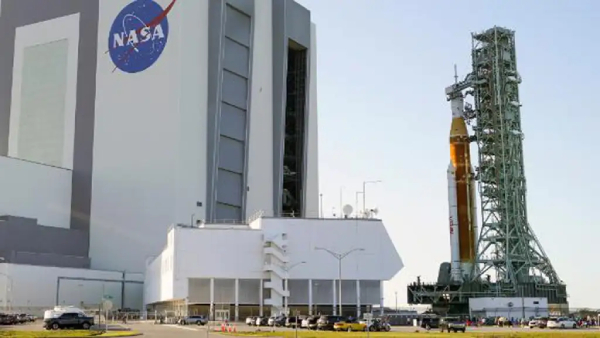By Ashley Strickland, CNN
(CNN) – – The Biden organization’s solicitation for the NASA financial plan in 2023 is $26 billion, the biggest solicitation for science in the space office’s set of experiences, NASA Administrator Bill Nelson declared Monday.
The figure is 8% more than the authorized government spending levels, or the allocation bill from financial year 2022, Nelson said.
“More prominent than a number, measurement, or reality is the thing the President’s spending plan demand addresses,” Nelson said in an articulation.
“This financial plan mirrors the Biden-Harris Administration’s trust in the uncommon labor force that makes NASA the best work environment in the national government,” Nelson said. “An interest in the organizations and colleges band together with NASA in each of the 50 states and the great paying position they are making. It’s a sign of help for our missions in another period of investigation and revelation.”
The solicitation was submitted to Congress Monday as a feature of President Joe Biden’s proposed spending plan for monetary year 2023. NASA authorities accept that Biden’s solicitation will permit NASA to proceed with interests in the Artemis program, which plans to land the main lady and the principal non-white individual on the moon in 2025, as well as give more examination into the environment emergency and advance variety, value and consideration.
Artemis mission to get lion’s share
The biggest piece of the $26 billion financial plan solicitation would go toward the Artemis program.
The spending plan has planned $7.6 billion for profound space investigation and $4.7 billion for investigation frameworks advancement.
Artemis is viewed as the program that won’t just return people to the moon and make an economical, durable lunar presence, yet will likewise plan NASA for the principal human investigation of Mars.
“We want to apply what we’ve realized living and working on the moon and proceed with then out into the planetary group,” Nelson said. “Our arrangement is for people to stroll on Mars by 2040.”
The $4.7 billion would be utilized on the side of lunar missions, such as financing for the Orion shuttle and Space Launch System rocket that will land space explorers on the moon. What’s more, $1.5 billion will go toward subsidizing new rivalry to foster maintainable lunar landers, which was declared last week by NASA.
“Recollect what occurred after the Apollo program? You had a few ages of architects and researchers and professionals that all emerged because of the remarkable work in Apollo,” Nelson said. “Yet, presently, the Apollo age has passed the light to the Artemis age. Also, this new age is getting ready to push the limits of what we know to be conceivable.”
Satellite checking and space tech
The spending plan demand additionally incorporates $2.4 billion that could support environment and weather conditions checking, utilizing satellites to notice our planet and other examination to establish a superior comprehension of the environment emergency.
The President’s financial plan will engage NASA to send off an Earth Information Center, Nelson said. The middle will screen ozone harming substances and different circumstances on Earth collaborating with different organizations and accomplices, incorporating information from satellites and telescopes to gauge water, land, ice and the climate on our planet.
Given NASA’s continuous business associations, the office has mentioned $1.4 billion for space innovation innovative work that could decrease costs, improve mission abilities and make more positions for the US business space industry.
“Our association with industry has proactively permitted more logical examination, and in December, NASA consented to arrangements with three American organizations to foster plans of room stations and other business objections, first in low-Earth circle and afterward who knows what, out of (low-Earth circle).”
This spending plan gives subsidizing to these endeavors. It empowers a business economy in low-Earth circle, where the US will keep a continuous presence after the arranged retirement of the International Space Station.
Noticing that the initial “A” in NASA represents flying, Nelson said $970 million of the spending plan would go toward flying exploration that could further develop avionics trips for everybody. This remembers decreasing the effect of the avionics business for worldwide environment and creating cutting edge airplane that will be more secure, smoother, cleaner and calmer.
In conclusion, there is $150 million to help NASA’s Office of STEM Engagement, offering more help for instructive endeavors and exercises, particularly in underserved regions.
Disclaimer: The views, suggestions, and opinions expressed here are the sole responsibility of the experts. No Unique Analyst journalist was involved in the writing and production of this article.

